WOODS HOLE – When John Holdren of Falmouth was appointed by then President-Elect Barack Obama on December 20, 2008 to be the president’s science advisor, he was given the simple task: “Help me put science and technology in its rightful place in my Administration,” recalled Holdren.
It was a task close to Holdren’s heart and one that, eight years later, he feels he and the administration accomplished. President Obama “wanted a fact-based administration,” said Holdren. “And that’s what he achieved,” he said.
Now less than two weeks after leaving his job at the White House, Holdren has already attended the women’s march in Falmouth, and expressed concern about several of President Donald Trump’s initiatives, including the recent order on travel and immigration.
“I’m not going to be silent now. President Obama is not going to be silent.” – John Holdren
And while he holds a wait-and-see approach on what Trump might do on science and technology, Holdren told Cape Cod Wave, “If the Trump administration tries to back away from the Obama agenda of clean energy and reducing greenhouse gas emissions, I assure you there will be strong pushback.”
“I’m not going to be silent now,” said Holdren. “President Obama is not going to be silent. And neither will the science community.”
“The benefits of science and technology for society have generally not been partisan issues,” said Holdren. “The question now with the new administration is whether they will embrace those longstanding bipartisan values.”
“I’d been thinking about this job since I was 29 years old,” said Holdren, now 72.
In 1973, when Holdren was new on the faculty at the University of California, Berkeley, he met President Eisenhower’s former science advisor, George Kistiakowsky, who told him what the job was like. Over the intervening years, he met every science advisor to the president since Kistiakowsky.
Holdren was born in a suburb of Pittsburgh and stayed there until he was 4, when his parents moved the family to San Mateo, California on the San Francisco Peninsula.
He was always interested in science and technology. He had a chemistry set at an early age, and he “built tiny rockets from my mother’s used lipstick tubes as the body of the rockets, with solid fuel and a time fuse concocted from the chemistry set. I went to a big field near my home. With the chemistry set, I built a time fuse. I would light the fuse and stand back and the rocket would fly several hundred feet in the air,” he recalled.
By the age of 12 years old or so, he said, “My aspiration at the time was to be the chief preliminary design engineer at the Boeing Company,” said Holdren.
But in high school he read two books that would broaden his perspective and set him on a path that would eventually land him in the White House as the science advisor to the President of the United States of America.
The first book was C.P. Snow’s 1959 book, “The Two Cultures.” said Holdren. Snow said that “intellectual life was increasingly split into two camps – that of scientists and engineers, and that of social scientists and humanists. And Snow argued that the solution to many of the most difficult societal problems required insights and expertise from both camps, said Holdren.
The second book that helped changed his course was Harrison Brown’s 1954 book, “The Challenge Of Man’s Future”, he said. That book argued that such global problems as population, resources, the environment, and international security all sat in that gulf, requiring interdisciplinary resources.” he said.
“I decided at that point that my ultimate goal was to work on those kinds of issues,” said Holdren.
Holden earned bachelor’s and master’s degrees from the Massachusetts Institute of Technology in aeronautics and astronautics “with a strong minor in physics,” he said. He received his Ph.D. in theoretical plasma physics from Stanford University.
Although he was interested in working the gulf between C.P. Snow’s two cultures, Holdren dedicated himself initially to plasma physics and fusion research. He didn’t want to just move straight to policy. He wanted to have credibility as a scientist doing science first, he said.
While Holdren was working on his Ph.D. at Stanford, he met Paul Ehrlich, who wrote the book, “The Population Bomb.” The controversial book made Ehrlich “famous or infamous, depending on your point of view,” said Holdren.
In 1981, Holdren was awarded one of the first MacArthur Prizes, or “genius grants.” He was 37 at the time.
Holdren started writing with Ehrlich, and through him he met Harrison Brown, author of one of the books that guided him earlier. That connection brought him to the California Institute of Technology to work with Brown and “led me ultimately to the University of California, Berkeley to start a new interdisciplinary graduate program in energy and resources.
In 1981, Holdren was awarded one of the first MacArthur Prizes, or “genius grants.” He was 37 at the time.
By the 1990s, he said, “I had a fair amount of visibility.” From 1994 to 2000, he led five science and technology studies for President Bill Clinton, while also chairing the Committee on International Security and Arms Control at the National Academy of Sciences. During that period, he continued teaching at Berkeley, while often commuting to Washington to work Friday to Monday. “Just about every week, I flew the Thursday night red-eye to Washington,” he said.
In 1996, he accepted an early retirement plan that Cal Berkeley used “to replace expensive professors with younger, cheaper ones.” He moved East, and went to work at Harvard University.
Specifically, he moved to Falmouth. “We moved 11,000 pounds of books east,” he said.
![]() Moving To A Place For Scientists
Moving To A Place For Scientists
In the 1970s, Paul Ehrlich introduced Holdren to George Woodwell, who in 1985 founded The Woods Hole Research Center, which studies climate change, land use changes, soils, wetlands and forests around the world. In 1992, Holdren took a sabbatical to do research at the Woods Hole Research Center.
He and his wife, Dr. Cheryl Holdren, who has a Ph.D. in biology from Stanford, bought a “sabbatical house” in Falmouth in 1992, he said. “I love the science community here,” he said as part of the explanation for his move to Cape Cod.
“I also love the environment. I love to fish. There’s great freshwater fishing and saltwater fishing,” he said. And Holdren added that he loves that he can take his boat out for 20 minutes, just on the other side of Naushon Island “and you can’t tell what century you’re in.”
So in 1996, with the new retirement plan from Berkeley, he, his family, and 11,000 pounds of books moved to Falmouth, where he bought a bigger home because his little sabbatical home wasn’t going to hold all those books. He kept working for President Clinton on weekends, and he went to work at Harvard.
“I call this area the best place I’ve ever been where a scientist can earn a living.”
After more than two decades in California, Holdren said it was time to come east. “I had promised my wife when we got married in 1966 that we would spend half of our life in New England, where she is from.”
And so they came to Falmouth. Citing the Woods Hole Oceanographic Institution, the Marine Biological Laboratory, the U.S. Geological Survey Coastal Sciences lab, the National Marine Fisheries Service, the Woods Hole Research Center, and the Sea Education Association all in Falmouth and Woods Hole, Holdren said, “I call this area the best place I’ve ever been where a scientist can earn a living,” said Holdren.
In 2005, he became the director of the Woods Hole Research Center.
![]() Meeting Senator Obama, Working For President Obama
Meeting Senator Obama, Working For President Obama
When Barack Obama was a senator, “he asked his staff to arrange a dinner for eight or ten people to talk with him about climate change,” recalled Holdren. “That was one of his modes of learning about a topic. He’d invite eight or ten people with diverse views to come and have a three-hour discussion over dinner,” he said.
Included in this particular dinner were two academics, two energy industry leaders, two NGO leaders, and a couple of people who had worked on climate change in government, recalled Holdren.
“I was seated next to Senator Obama,” said Holdren. “We really hit it off. From that time forward, I was a part-time informal advisor to the Senator and his staff.”
When Obama ran for president in 2008, he formed an environment-and-energy “brain trust,” said Holdren. “I was a member of that. We met periodically over the course of the campaign.”
“I knew him reasonably well by the time he was elected president,” said Holdren.
As Obama was filling his first staff, Holdren said, “There was a lot of chatter in the science community about who was on the short list. Who was in consideration.” So when the job of science advisor was offered, “I was pleased, but not surprised,” he said.
President Obama “wanted a fact-based administration.”
Eight years later, Holdren looks back at “quite an extraordinary record of work to put science back in its rightful place.”
The litany of accomplishments beyond operating a fact-based administration were included in a 16-page exit memo Holdren’s office produced as it left.
The accomplishments include improving STEM (science, technology, engineering & math) education; increasing the role of technology in government; an increase in research and development funding; and several medical initiatives such as precision medicine, understanding the brain, accelerating progress in treating and preventing cancer, and combating antibiotic resistance.
And, of course, there was the focus on climate change, including 2015’s historic Paris Climate Agreement.
“We got an awful lot done with only modest cooperation from Congress,” said Holdren.
![]() The Circus Around Climate Science
The Circus Around Climate Science
“There were unfortunately many people in the Congress on the Republican side of the aisle who opposed whatever President Obama proposed,” said Holdren.
Specifically, Holdren said, Republicans have associated climate change with increased regulation. He cited a memo the pollster Frank Luntz sent to President George W. Bush in 2002 in which Luntz wrote that the debate on global warming debate “is closing (against us) but not yet closed. There is still an opportunity to challenge the science.”
In that memo, Luntz suggested to Republicans, “You need to continue to make the lack of scientific certainty a primary issue in the debate.”
Holdren said that climate science goes back almost 200 years. “Various studies done show that about 97 percent of climate scientists who have been published in peer-reviewed literature agree that human-caused climate change is real.”
As for the other three percent, Holdren said, “There are contrarians in every field, who hope to make their reputation by proving the mainstream wrong; and there are people whose political preferences—such as an aversion to government regulation—get in the way of their scientific judgment.”
Holdren said that sometimes scientists with specialties other than climate science make pronouncements casting doubt on human-caused climate change, too, and these statements get the public’s attention “Not every scientist is a climate scientist. Lots of people are scientists who think they are so smart that they can understand a field that is not their own,” he said.
During his eight years at the White House, Holdren appeared before Congress several times, most memorably in September 2014 before the US Congressional Committee on Science, Space and Technology when then Daily Show Host Jon Stewart described his task as “charged with the impossible task of pushing a million pounds of idiots up a mountain.”
At one point in that September 2014 hearing, Representative Larry Bucshon (R-Indiana) cited public comments as his reason for skepticism, at which Holdren said simply, “You should look at the scientific literature rather than the public comments.”
“A predecessor told me these hearings are partly circus,” said Holdren.
Asked about the circus aspect of the hearings, Holdren said, “They’d lambaste you in a public hearing. And then protocol required you go up and greet them and they’d chat you up like you were old friends in the privacy of the close-up interaction.”
“Certainly the Congressional testimony days were not the most fun days of my time in the White House,” said Holdren.
But he knew how it worked. “The goal of many of those folks is to try to embarrass the witness, thereby embarrass the administration,” said Holdren. And he added, “If people don’t want to hear facts, they can’t really be reasoned with.”
Holdren knew he needed to represent the administration and the role of science. “At the same time,” he said, “you need to retain your sense of humor and retain your equilibrium.”
Asked about the circus aspect of the hearings, Holdren said, “They’d lambaste you in a public hearing. And then protocol required you go up and greet them and they’d chat you up like you were old friends in the privacy of the close-up interaction.”
![]() The Future – “Every voice matters.”
The Future – “Every voice matters.”
Holdren is now considering opportunities he wasn’t allowed to think about before January 20 because of conflict of interest rules. He plans to write, speak and teach.
For now, he is a senior advisor to the director of the Woods Hole Research Center. The director, Philip Duffy, previously worked as a climate scientist with Holdren in the White House.
Holdren said he plans to continue to speak up. Asked why he attended the women’s march in the small quaint New England town of Falmouth, most likely not on President Trump’s radar, Holdren said, “Every voice matters.”
Holdren insisted that there will be pushback if science is taken out of its rightful place in the new administration.
Having spent eight years in the White House, he insisted that those currently occupying 1600 Pennsylvania Avenue will pay close attention, especially if people are marching in cities and towns across America.
And he said he remained hopeful that they will embrace the proper role of the Federal government in promoting and using science and technology.
As he was leaving the White House, though, Holdren said he had “very little contact” with the new administration. “There was one meeting with a member of the transition team a week before the inauguration, and that was it,” he said.
– Please like us on Facebook.
For more stories like this, please see Longform Stories
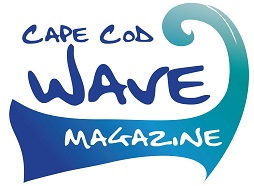
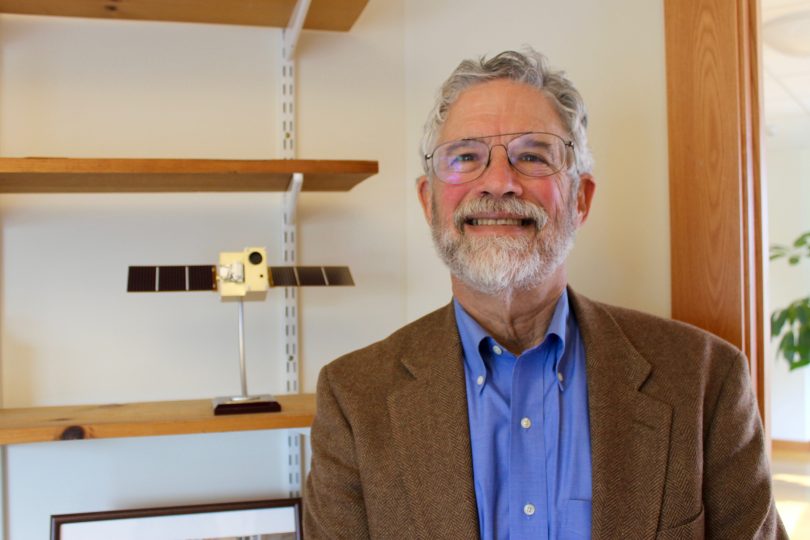
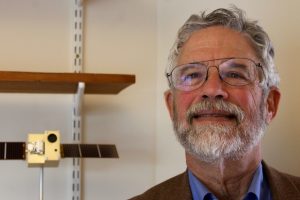
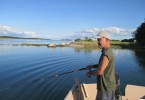
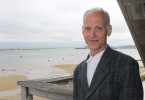

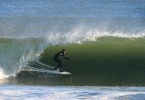

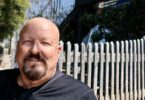

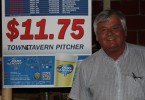



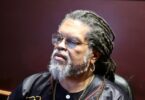
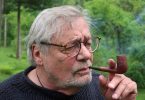


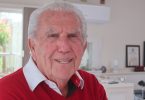






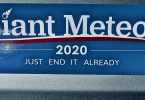

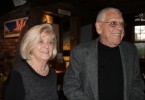


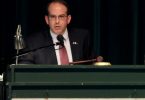

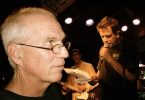
What an inspiring story. Thank you Mr. Holdren for your dedication and contribution toward furthering environmental awareness on climate science and technology. I am equally moved by your determination to keep climate science front and center. I hope to hear more about this in the news to generate greater public awareness to its vital role and the need to take heed to what the science is saying. Thank you again.Your work is so important and is greatly appreciated.
[…] https://capecodwave.com/john-holdren-obamas-science-advisor-im-not-going-silent-now/ […]